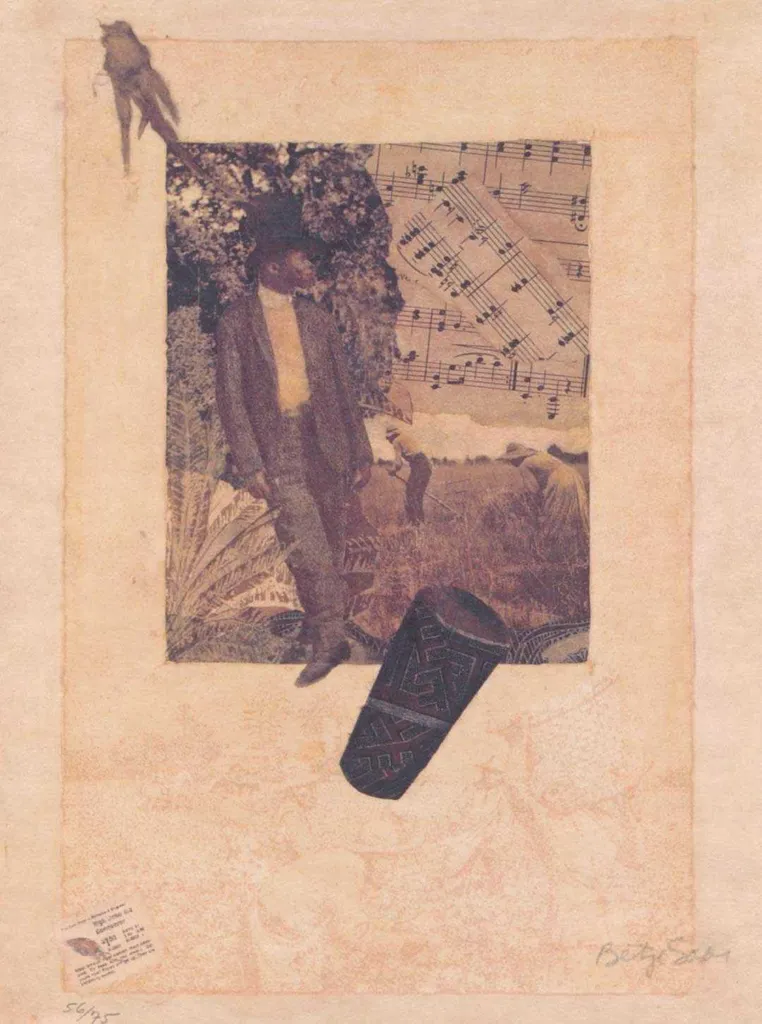- January 26, 2023
- By Sala Levin ’10
Starting today, two artists are coming together on campus through the matrix.
No, there won’t be any slow-motion bullet dodging, black leather trench coats or choices between blue and red pills. Instead, the term used in the new exhibit “Ringgold/Saar: Meeting on the Matrix,” opening at the University of Maryland’s David C. Driskell Center, refers to the physical surface that transfers ink to paper in printmaking.
The exhibit of print—and other—media by renowned artists Faith Ringgold and Betye Saar emphasizes how they have framed the political, domestic, cultural and artistic experiences of African Americans. It's the first known major exhibit jointly highlighting their work.
Ringgold and Saar have “taken a lot of derogatory images, like Aunt Jemima, and recontextualized her, gave her a power, gave her authority to try to remove the negative connotations or stereotypes associated with racism and discrimination,” said Curlee Holton, director of the Driskell Center.
Ringgold, 92, has often made explicitly political artwork, as in her Black Panther posters, which include depictions of a man, woman and child each armed with a weapon. “It’s very bold, very out there, very outspoken,” said Cléa Massiani, a Ph.D. candidate in the Department of Art History and Archaeology who is one of the exhibit’s curators. Ringgold’s use of bright colors and printed words brings a further sense of radical activism to her work.
Saar, 96, has a gentler style. Her art often depicts small moments in her subjects’ lives: a girl in a sunflower patch, two women curled up by a fire, or, in a piece called “Anticipation,” a woman holding a bunch of flowers, waiting for something unknown. Her non-print work often incorporates found materials, like used fabrics, leftover food or old buttons. “She’s taken those cast-away objects that have been discarded in the world … and restored them with a certain type of power and force,” said Holton.
Still, the fascination with mysticism, voodoo, astrology and spirituality that’s evident in her creative output offers a subversive view on mainstream religion. And, said Massiani, “she’s a Black woman working in the 1960s and ’70s in the U.S. Her entire body (of work) is political.”
While the exhibit focuses primarily on the artists’ printmaking, there are also examples of other media that Ringgold and Saar were known for. One of the quilts for which Ringgold is famous is on display, as are sculptures, reliefs and other objects.
The exhibit, which runs through May 22, could give visitors a new respect for the art of printmaking, Massiani said. “I hope that people will take a good look at what printmaking is and what it could be like, and how prints are valuable objects.”

Faith Ringgold’s 1970 Black Panther series, © 2023 Faith Ringgold, Courtesy ACA Galleries, N.Y.

Faith Ringgold signs a print of “Papa Can Blow”

Betye Saar, “LA Sky With Spinning Hearts,” 1989. Permanent collection of the David C. Driskell Center. Courtesy of the artist and Roberts Projects, Los Angeles, Calif.

Faith Ringgold, “Mahalia We Love You,” 2012. Permanent collection of the David C. Driskell Center. Courtesy of the artist, Member of Artists Rights Society (ARS), N.Y.. and ACA Galleries, N.Y.

Betye Saar, “High John De Conquer“ from “Bookmarks in the Pages of Life,” 2000. Collection of Lewis Tanner Moore. Courtesy of the artist and Roberts Projects, Los Angeles, Calif.
Topics
Arts & Culture